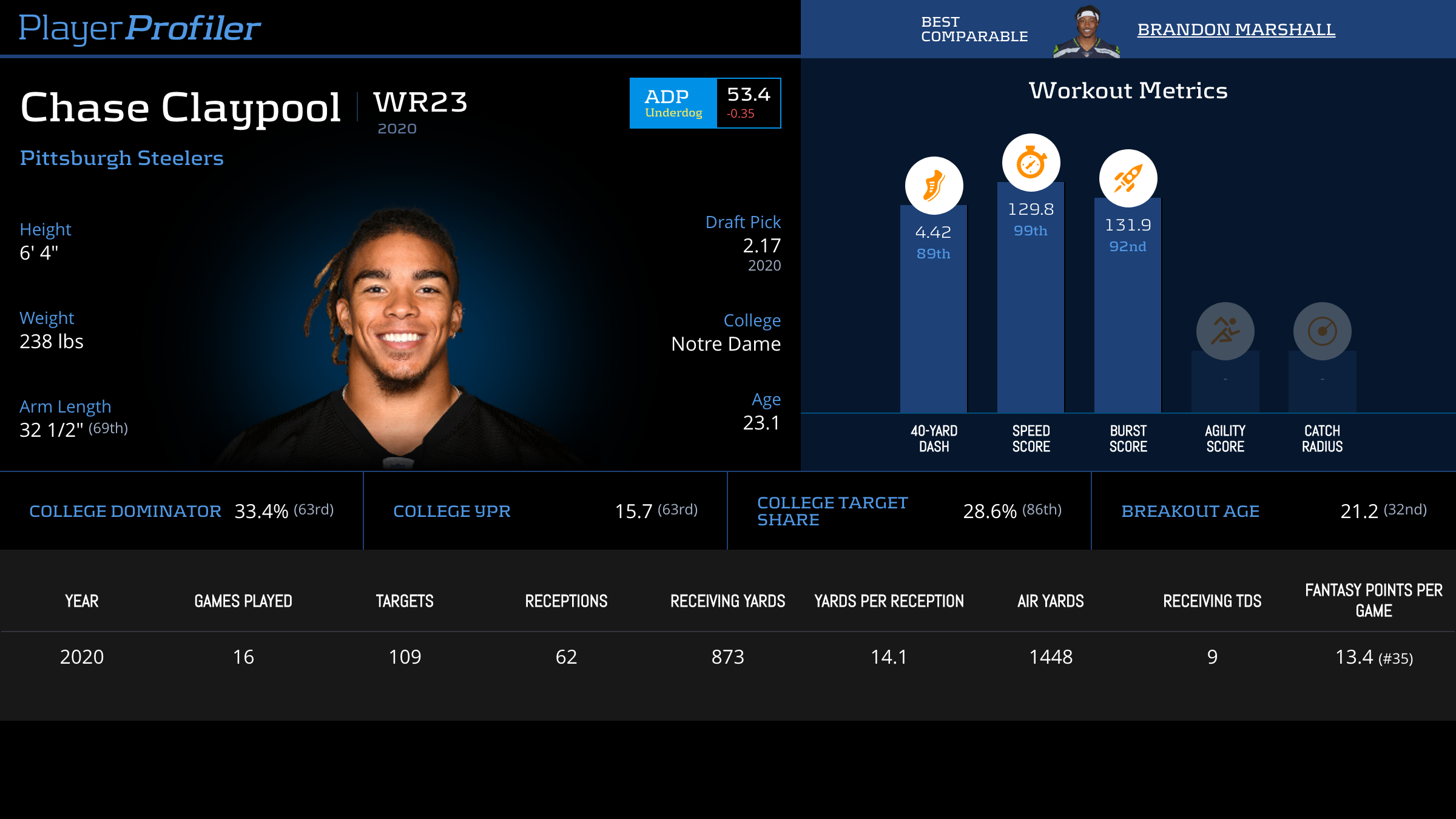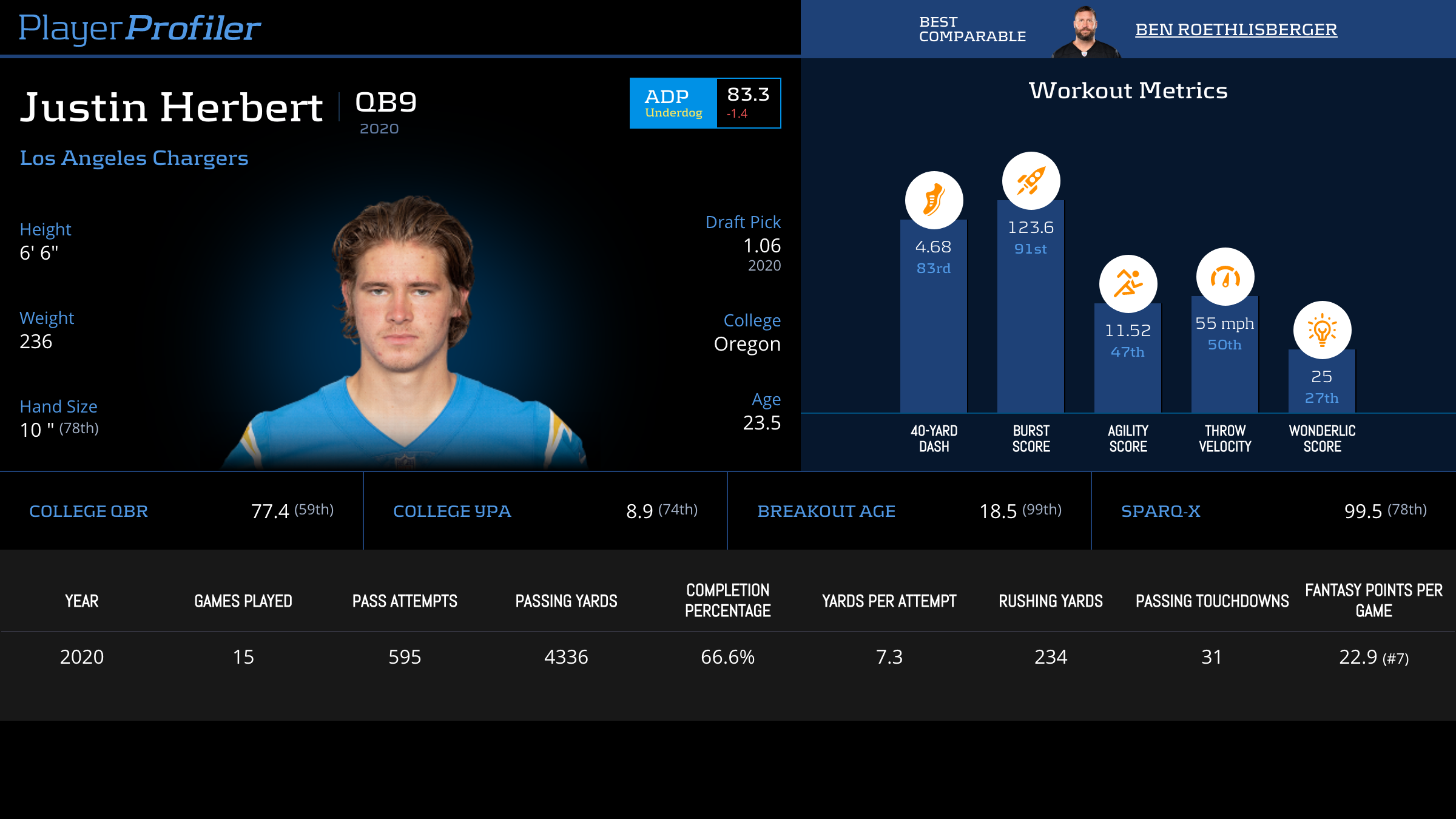Another week, another devastating injury that shakes the fantasy landscape before the first slate kicks off. The 2021 season continues to resemble a Shakespearian tragedy. But as the bard once wrote, “we know what we are but not what we may be.” Let these words serve as our backdrop for the first official edition of The Pareto Principals.
As announced earlier this week, I am writing a weekly column on Daily Fantasy Sports tournament strategy with an eye toward limited entry contests. For an introduction to my series, and an overview of my general process please read my guiding principles article. If you’ve yet to; here is a reminder this column will not focus heavily on players or lineups. I will examine elements of tournament strategy relevant to the given week, and apply it to a lineup concept. Without further ado, let’s dive into Week 1!
The Pareto Principals: Guiding Principles For Limited Entry DFS
Legendary economist John Maynard Kaynes is famous for the concept of nominal rigidity; known as ‘sticky prices.‘ The thesis states that human beings cannot match the flexibility of a perfectly competitive economic market. Thus, even when market conditions dictate a price movement, the actual rates set by firms will be slower to adjust. Sticky prices has both a figurative and literal translation to the week one DFS slate.
You’re Not Playing Against the House
We know human beings cannot accurately price the market within a continuous period of time. Now imagine firms were forced to hold prices stable for seven months while the market fluctuates, and project appropriate levels immediately thereafter. The values would be extremely inefficient. Every Week 1, we have an opportunity to profit from this situation. Even the sharpest pricers in the industry are forced to make broad assumptions on player values coming into a brand new season. In response to this opportunity, many learn the wrong lesson.
Unlike cash games, you are not playing against the house. Your point per dollar value is meaningless if you are identifying all the same inefficiencies as your opponents. How can we work this to our favour? Let’s examine three primary paths to use sticky pricing in our favour this week.
Profiting from Humility
There is a saying in golf to take ‘aggressive swings at conservative targets.’ In DFS it’s best to remain humble on your ability to solve the salary cap, but make aggressive lineups around the choices you make. Most of the digital ink spilled on DFS this week will surround point per dollar value. Players such as Marquez Callaway, Marvin Jones, and Tee Higgins jump off the screen at $3400, $3600, and $4700 on DraftKings respectively. However, your ability to win a tournament is a composite of your ability to find value against the salary cap, and to do so at a higher rate than your opponents. The win equity you derive from each successful play is a function of the leverage you generate vs. the field’s total rostership.
Betting confidently on the best expected values doubles down on why we have inefficient pricing in the first place. We don’t have enough information about these players and teams yet! We know there are a plethora of underpriced players available, and its up to us to find the ones others won’t.
Raw Points vs. Points Per Dollar
Even in efficient pricing environments, DFS players place too high an emphasis on price-based value as opposed to raw points. This thread by Jordan Cooper lays out why.
Average NFL DFS players often focus too much on getting a certain “value” on a player from a point per dollar perspective.
Many will roster several players that exceed this “value” yet still fall significantly short of attaining enough raw points to win a GPP.
— Jordan Cooper (@blenderhd) September 8, 2021
If you go into an auction draft with a stars and scrubs approach, you don’t do so to find league winner ‘scrubs.’ You’re willing to make educated bets on low-priced players to open up the most money for irreplaceable, high-priced assets. It works the same way in DFS. Nearly half of respondents in the below poll associated with Cooper’s thread stated that a $3000 player scoring 18 points is more valuable than an $8000 player scoring 32. Nearly half are wrong.
Which player’s fantasy point outcome is typically more valuable for your lineup in large-field GPPs?
— Jordan Cooper (@blenderhd) September 8, 2021
18 raw points from one lineup spot is not itself contributory to a tournament winning lineup. That $3000 player only has major value if it allows you to access higher raw points at higher salaries than others are able to. The $3000 player is only more valuable if they allow you to afford a $9000 player who scores 36 points vs. the 32 points available for $8000. If that happens, the most valuable player of all is the $9000 player.
It makes little sense to latch on to consensus options at low prices who will not independently offer the ceiling you need to win a tournament. First, it is probably comparably priced players will outscore them. Moreover, if salaries are inefficient, production will not be tied strictly to price among top producers either, dulling the edge from cheap values.
Remain humble in your ability to identify the ‘best’ plays, and take advantage of opportunities for unique constructions gifted to you by others’ convictions.
The Toilet Paper Corollary
Thus far, we know the market is inefficient, and you should steer clear of consensus discounts. But who should you play? I rely on the heuristic of inferior goods.
Inferior goods have value inversely correlated with market conditions. While ‘normal goods’ increase in demand when the economy is strongest, inferior goods are most demanded when market conditions sour. For example, cheap food options such as canned meats and ramen noodles are inferior goods. When the COVID-19 pandemic restrictions first hit, demand for toilet paper reached an all-time high. This is a textbook example of inferior goods in practice.
How does this relate to football?
I call players who succeed most in game conditions which are negative overall as inferior goods players. With so much uncertainty regarding week 1, we know the variance for players and offences works in both directions. But as since we’re aiming to win a tournament, we need to chase ceiling outcomes. Thus, we ought to prioritize players who not only benefit from positive game conditions, but those who can create positive game conditions. In other words, among players with an equal chance to succeed at cost, we want to avoid ‘inferior’ goods in favour of normal goods. Above all else, chase those who can drive the market.
Chase Claypool: Economic Engine
An example: let’s say you want to target the Steelers-Bills game. If you’re playing Josh Allen and Stefon Diggs on one side, your next decision should be which Steeler to run the game back with. Your choices are Najee Harris, Juju Smith-Schuster, Diontae Johnson and Chase Claypool. All range from $5600 to $6300 on DraftKings. By stacking this game, you’re betting on it to be the highest scoring contest on the slate. While all are strong plays to complete your stack, you want to target players who correlate with the game’s ceiling outcome. You’re banking on a octane performance from the Steelers to keep the Bills passing to Diggs. Your best bet for this is with Claypool.
A man I’ve spoke glowingly of before on this site, the second-year wide receiver had the highest average depth of target on Pittsburgh in 2020, and was top 10 in the league in Air Yards.
The ceiling outcome of this game is more likely to involve an 80-yard bomb to Claypool than a series of Smith-Schuster slants. The Green Bay-Minnesota and Seattle-Atlanta games were DFS gold in last year’s Week 1. Both were spurred by long touchdowns to explosive playmakers. Given our dearth of knowledge regarding each team’s tendencies, it is best to bet big on a macro level rather than diving deep into micro-analysis this early in the year.
Sticky Prices as a Function of Human Behaviour
We’ve talked about sticky prices at a literal level with regards to salary, but there is a figurative adaptation of the concept as well. If NFL teams were a market, the talent level of each team would be the economic forces that drives value. Coaching decisions are the inefficient price setters. Remember, sticky prices are a function of inefficient human behaviour.
The correlation of defensive efficiency year-to-year is less than 0.1. That is just half the correlation of offensive efficiency. Making week one lineup choices based on the expectation of defensive matchups is sub-optimal, especially when compared to other factors more stable over time and less baked into the market’s expectation of the game environment. Coaching tendencies regarding run-pass ratio and pace of play should be afforded consideration until proven otherwise. The aforementioned Bills-Steelers contest is one game that projects positively based on these factors despite an expectation of high-quality defensive play. Another is Los Angeles Chargers-Washington.
Under-Priced, Over-Charged:
Of all games on the main slate, BUF-PIT and LAC-WFT are the only ones featuring two teams above the median in neutral situation pace, and neutral situation pass rate last season according to Sharp Football Analysis. However, WFT-LAC has the third lowest over/under on the slate and BUF-PIT sits middle of the pack. We have good reason to expect high-quality defence on all sides of these games, but we should never be certain. If assumptions about defensive quality depress ownership in fundamentally strong games, I will shoot my shot against Vegas in tournaments.
The chargers have a new coach, however Brandon Staley comes from the fast-paced Rams and boasted an off-season of progressive commentary regarding his pass-first offence. Moreover, it’s possible we get an under-rostered Austin Ekeler if he is declared healthy by game-time after missing practice with a hamstring injury. On the other side, Curtis Samuel has landed on IR after aggravating his groin, narrowing the target tree in Washington. Any combination of skinny stacks between Ekeler (if healthy), Keenan Allen, Terry McLaurin, Antonio Gibson, and Logan Thomas will be a fixture in my tournament core this weekend.
The Final Word
Thank you for joining me in the first edition of The Pareto Principals. I won’t be giving specific lineups in this column because I can’t finalize who I’m playing without access to final rostership projections. But if you want a set of kick-ass lineups from the underworld, Josh Larky has you covered! I will see you next week, with a rundown of the lineups I played, an analysis of my results, and another set of market strategies and core plays for week two.













